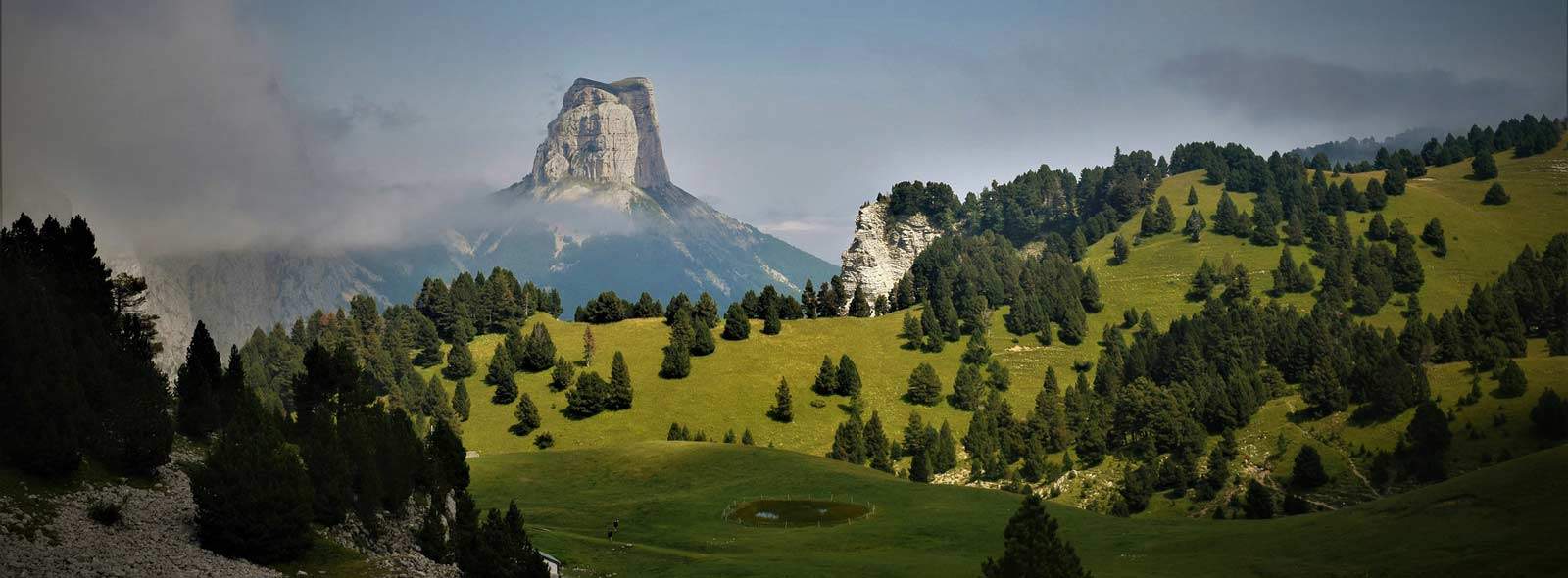The Vercors Regional Natural Park was classified in 1970 because of its exceptional heritage. This status allows it to reconcile biodiversity and economy.
Where is the Vercors Regional Natural Park?
The Vercors regional natural park, located between the cities of Grenoble and Valence, extends over a vast mid-mountain massif of 206,000 hectares, including 17,000 hectares classified as a nature reserve.
It brings together 53,000 inhabitants in 85 municipalities, including 48 attached to the department of Isère and 37 to the department of Drôme, and spread over eight natural regions: northern Piedmont, Quatre-Montagnes, Coulmes, Vercors Drômois, Royans, Diois, Trièves and Gervanne. The gateway towns to the regional natural park are Grenoble, Crest, Romans, Saint-Marcellin and Vinay. The Rocher Rond, which culminates at 2453 meters above sea level, is the summit of the natural park.
Straddling 2 departments, the Vercors offers an exceptional diversity of landscape: vertiginous roads, the highest natural reserve in France, high plateaus, forests,... as well as a very rich fauna.
The largest nature reserve in France within the Vercors regional natural park
The Vercors Regional Nature Park is home to the "Hauts-Plateaux" nature reserve, which has been a protected area since 1985. This nature reserve extends over more than 17,000 hectares and remains to this day the largest nature reserve in mainland France. The Hauts-Plateaux nature reserve is located at the foot of Grand Veymont and offers its visitors breathtaking landscapes.
This protected area is open to all but regulated. Pastoralism has been practiced there for more than a millennium and hiking is now widely developed there.
The nature reserve, despite its wild aspect, requires daily management provided by the Vercors Park and which, thanks to its actions, makes it possible to preserve the fauna, flora, natural environments as well as the built heritage.
The wealth of fauna and flora of the Vercors Regional Natural Park
The exceptional environment of the Vercors Regional Natural Park is home to a rich and varied fauna and flora that the park must preserve. The regional natural park has 1800 plant species, 85 of which are protected. There are also 79 species of orchids. In terms of fauna, there are 72 species of mammals (chamois, deer, roe deer, mouflon, wild boar, ibex, etc.) and almost 140 species of nesting birds that build their nests there to reproduce.
To promote the richness of the natural environment, the Vercors Regional Natural Park has relocated certain animal species such as, for example, the ibex which was reintroduced in 1989 and 1990 in the Cirque d'Archiane and in Royans between 2000 and 2002. Similarly, griffon vultures have been reintroduced in the Diois since 1996, as have bearded vultures in 2010, 2011 and 2012.
Activities to do in the Vercors Regional Natural Park
The great diversity of the landscape and relief allow the practice of a large number of activities. The natural park is full of hikes of all levels. Indeed, the Vercors has 4000 km of marked walking and hiking routes and being a mid-mountain massif, its paths are accessible to all and thus satisfy all hiker profiles.
It is also a huge playground for mountain biking, Nordic skiing, but also cycling and climbing and many other activities to do in the Vercors in summer. Speleology enthusiasts can also practice their favorite activity in the thousands of underground cavities present in the Vercors.
You can also set off to explore the most beautiful villages in the Vercors, such as the picturesque village of Saint-Antoine-l'Abbaye or the unmissable village of Pont-en-Royans.


